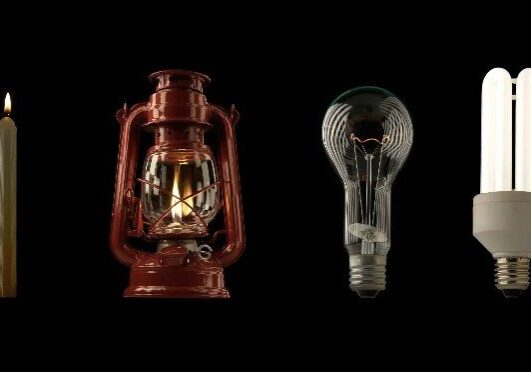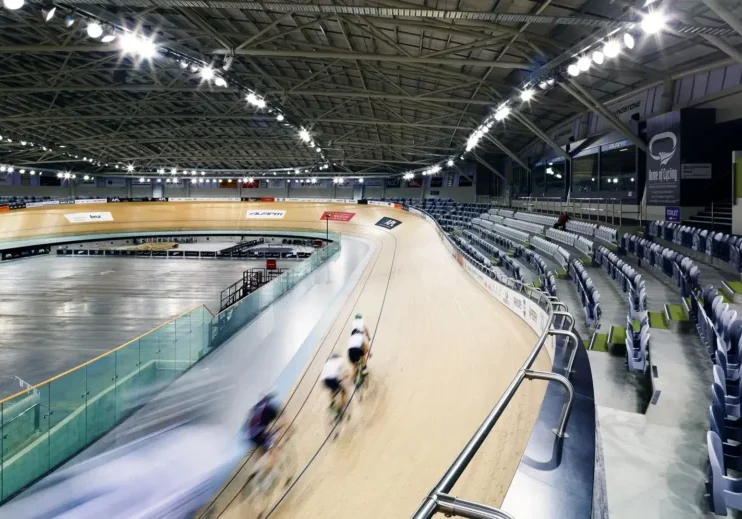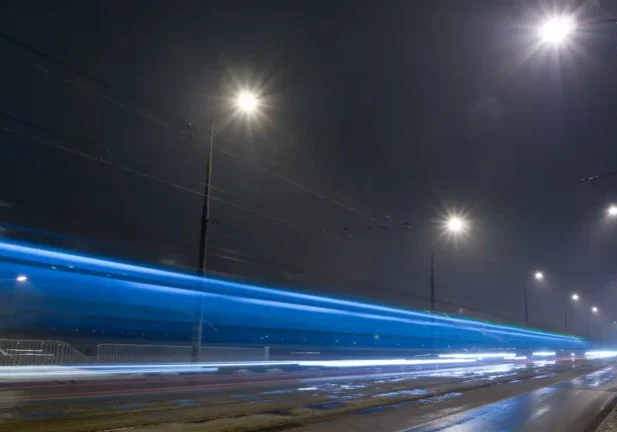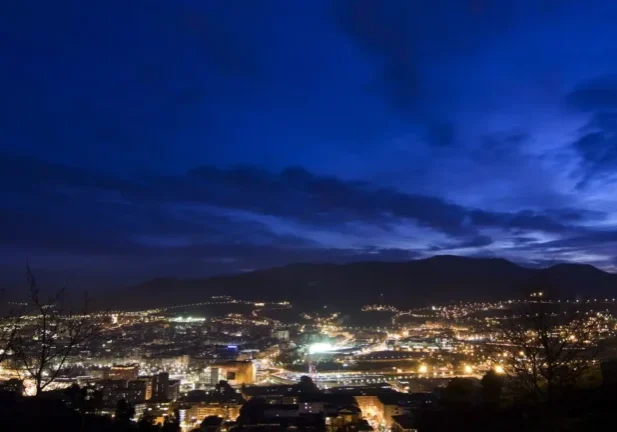Light has always defined how we live, work, and connect. From the flicker of a flame to the precision of intelligent LEDs, every era of lighting design tells a story of progress. What began as a simple necessity has evolved into one of the most influential forces in modern architecture and urban design.
In this article, we explore the history of lighting design and how it has evolved through centuries of innovation.
Early Light and the Dawn of Illumination
Fire
 Before lighting became a science, it was an art of survival. The earliest forms of illumination, fire pits, torches, and oil lamps were designed less for aesthetics and more for necessity. Buildings were constructed around courtyards, hearths were central to homes, and city streets vanished into darkness once the sun went down.
Before lighting became a science, it was an art of survival. The earliest forms of illumination, fire pits, torches, and oil lamps were designed less for aesthetics and more for necessity. Buildings were constructed around courtyards, hearths were central to homes, and city streets vanished into darkness once the sun went down.
Oil Lamps
As civilisation advanced, so did the pursuit of controlled light. Oil lamps, refined by the ancient Greeks and Romans, marked one of humanity’s first attempts to engineer light. Later, candles became the dominant source for interior lighting throughout the Middle Ages, shaping design and behaviour in subtle but profound ways. Their soft, warm glow dictated smaller, enclosed spaces, while the scarcity of light itself created rhythm in daily life, day for work, night for rest.
Gas-Powered lighting
The industrial age brought with it a major breakthrough: gas lighting. First introduced in late 18th-century London, gas lamps transformed urban environments. Streets that were once perilous after dark became active, safe, and social. For the first time, light defined the night. Gas illumination extended working hours, powered economic growth, and reshaped how cities were planned, laying the foundation for what we now recognise as urban lighting design.
The Electric Revolution Powering Progress
Arc Lamps
 The dawn of electric light marked one of the most transformative moments in the history of lighting design. The late 19th century saw the invention of the arc lamp, brilliant, harsh, and powerful enough to light entire city blocks. While these early systems were unwieldy, they represented a profound shift: light could now be generated without flame, fuel, or constant human intervention. Electricity had arrived, and with it came the modern city as we know it.
The dawn of electric light marked one of the most transformative moments in the history of lighting design. The late 19th century saw the invention of the arc lamp, brilliant, harsh, and powerful enough to light entire city blocks. While these early systems were unwieldy, they represented a profound shift: light could now be generated without flame, fuel, or constant human intervention. Electricity had arrived, and with it came the modern city as we know it.
Incandescent Bulbs
Thomas Edison’s incandescent bulb soon refined this breakthrough, bringing soft, reliable illumination indoors for the first time. Lighting became practical for both streets and interiors. It was safer, more efficient, and easier to control. For the first time, buildings could operate beyond daylight hours. Factories worked through the night. Public life extended into the evening. Urban growth accelerated because light was no longer a limitation.
Fluorescent & HID Lighting
The evolution continued into the mid-20th century with fluorescent and high-intensity discharge (HID) lighting. These technologies offered brighter, more efficient alternatives that transformed everything from office environments to major transport hubs. They also gave rise to new architectural aesthetics, cleaner lines, reflective materials, and the seamless integration of light into structure.
But beyond efficiency, the electric era brought a deeper understanding of Light Engineering. It was no longer enough to simply install bulbs; designers began to measure, model, and manipulate light. The principles of illumination, lux levels, colour rendering, distribution, and contrast became part of the architect’s toolkit.
 LED Technology Reshapes Lighting
LED Technology Reshapes Lighting
If electricity changed how cities functioned, LED technology changed how we design them. The LED revolution, which began in earnest in the late 20th century, transformed lighting from a static utility into a dynamic, data-driven design tool. Light could now be shaped, tuned, and managed with precision.
At its core, LED lighting brought three key breakthroughs: efficiency, longevity, and control. Compared to older systems, LEDs consume significantly less energy. Their compact size and versatility allowed engineers to embed illumination seamlessly into architecture, hidden in façades, integrated into roadways, or sculpted around public art installations.
But perhaps the most profound shift came through light control systems. It was a new level of Light Engineering, where energy use could be optimised without sacrificing safety or experience. Across New Zealand and globally, this technology has reshaped public space lighting trends. The LED era didn’t just make lighting more efficient; it made it intelligent, laying the groundwork for the smart cities of today.
Smart Lighting Systems Take the Lead
 Adaptive and Sensor-Based Lighting
Adaptive and Sensor-Based Lighting
Modern lighting systems are designed to think for themselves. Using sensors that detect motion, daylight levels, and environmental conditions, adaptive lighting ensures illumination is always fit for purpose. Sports facilities and public spaces can brighten during peak activity and dim when quiet, reducing energy waste while maintaining visibility and safety.
IoT Connectivity and Data Integration
The fusion of lighting with IoT has redefined how engineers design and manage light. Connected luminaires now communicate data on energy use, maintenance needs, and performance trends. This integration enables predictive maintenance and smarter energy management, creating lighting networks fit for the needs of modern cities.
Dynamic Colour and Tunable Systems
Colour-tunable LEDs have revolutionised how lighting shapes mood and experience. From cooler tones that support focus and alertness to warmer hues that promote comfort, these systems adapt seamlessly throughout the day or event.
The Future of Illumination
Lighting design is evolving faster than ever, driven by innovation, sustainability, and a deeper understanding of how light shapes the human experience. The future lies in lighting systems that think, respond, and enhance the way we live and move through our environments.
- Human-Centric Lighting: Next-generation systems are designed to align with our natural rhythms, adjusting colour temperature and intensity throughout the day to support concentration, comfort, and rest.
- Adaptive Optics: Advanced lensing and beam-shaping technologies are enabling greater control over light distribution, reducing glare and optimising uniformity.
- OLEDs (Organic Light-Emitting Diodes): Ultra-thin, flexible, and visually refined, OLED panels represent the next evolution in architectural and decorative lighting.
- AI-Driven Systems: Artificial intelligence is redefining light management, monitoring occupancy patterns, environmental data, and energy use in real time. These systems continuously learn and adapt, providing illumination that’s both efficient and contextually responsive to human activity.
At LDP, we see this not as a distant future but as the path forward, where innovation in light engineering shapes cities that are brighter, healthier, and more sustainable for generations to come.
Lighting the Way Forward
From firelight to fibre optics, the history of lighting design tells the story of human progress; our drive to see further, build smarter, and live better.
At LDP, we continue that legacy of innovation; combining precision engineering, sustainability, and creative design to illuminate spaces that perform beautifully and responsibly. Get in touch today, and let’s design the next chapter of lighting together.

























